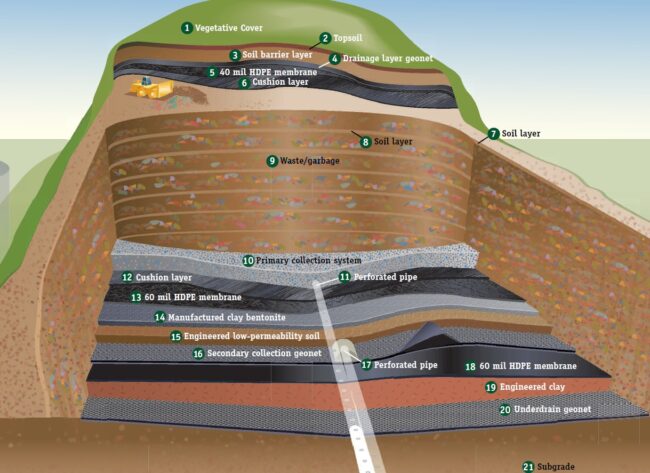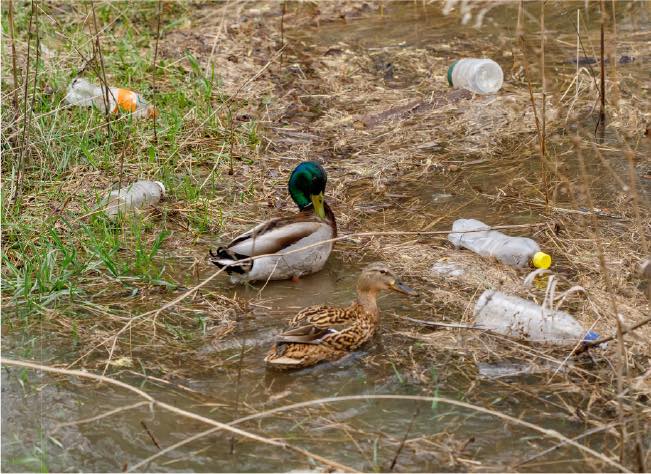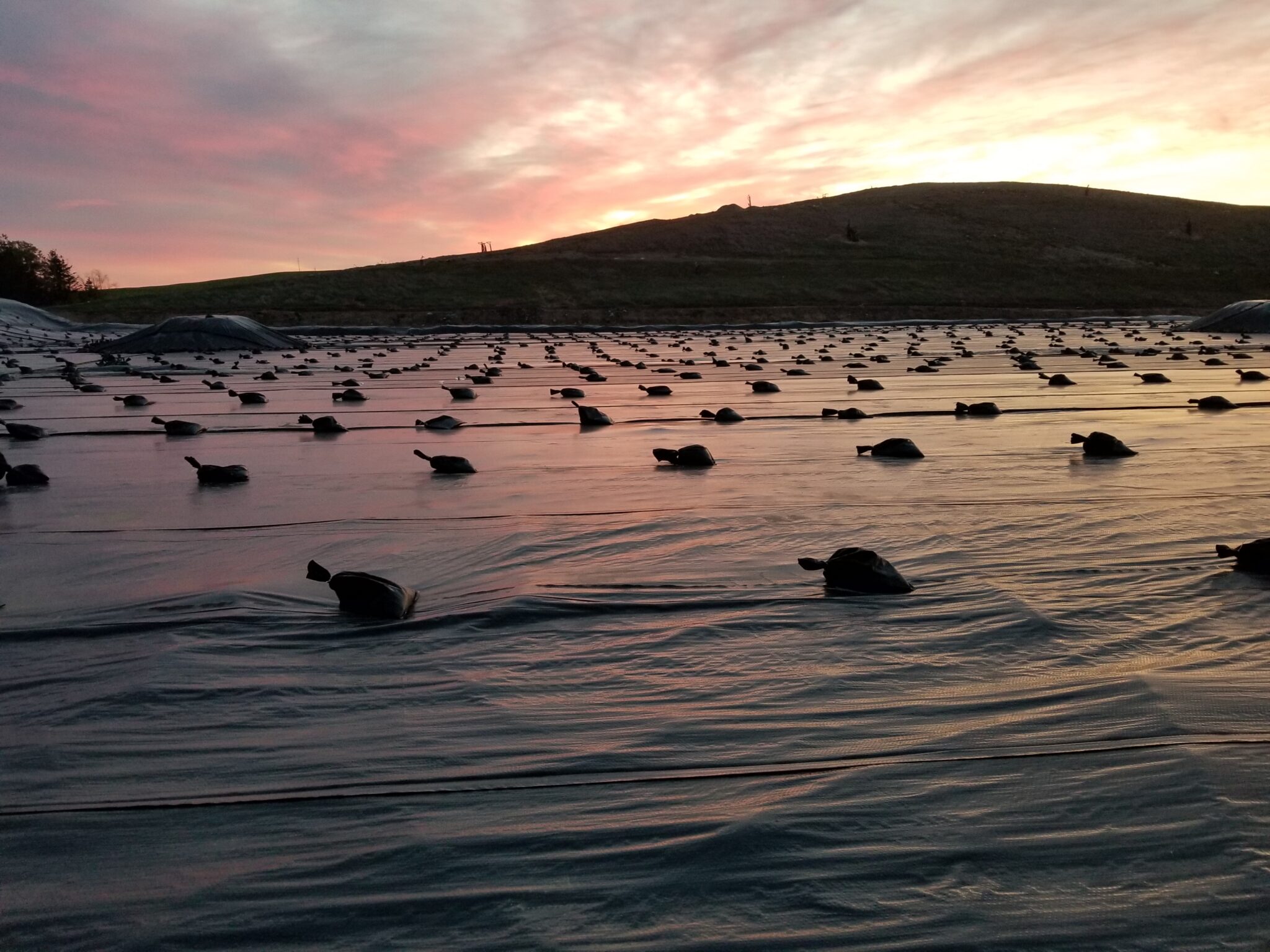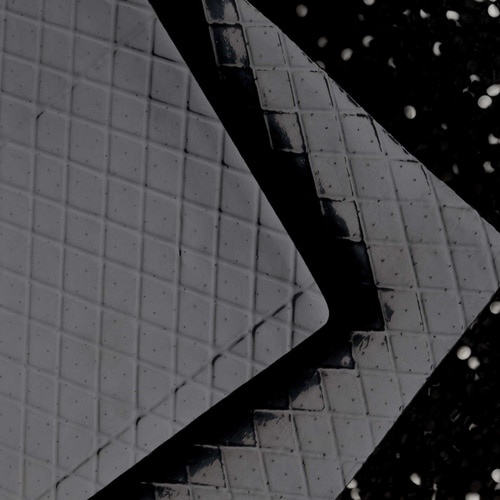Temporary landfill covers are truly essential to protecting water quality. Though it is an added expense, the result can be a cost savings for our landfills and cleaner water for everyone; a true win-win! Let’s explore the reasoning behind temporary landfill covers and how they can help the environment and your pocketbook.
The Percolation Infestation
As rain falls (or in some climates, as snow melts), it percolates through the topsoil. In cases where a temporary or permanent cover, also known as a cap, has not been installed on a landfill; that rainwater or snowmelt moves through the refuse in the landfill and produces leachate. Leachate is produced when water moves through a substrate, and in the case of landfills, picks up anything from organic and inorganic chemicals to heavy metals and even pathogens. These are then transported with the infiltrated water and can enter surface or groundwater systems.
Today, landfills are constructed with composite geosynthetics systems that are designed to capture any leachate that makes its way through the refuse. That captured leachate must then be removed and either disposed of or treated. In addition to this being a costly process, there is still a chance that leachate could eventually make its way through the protective lining system and into the surrounding ground and surface water. Every drop of water that is diverted from infiltrating into our landfills will decrease the amount of leachate that needs to be treated, and the chance for it to make it into our waterways.
 |  |
Runoff Roulette
Another method rainwater and snowmelt can carry contaminants from landfills into our waterways is via surface runoff. Surface runoff occurs when a large volume of water is introduced to an area in a short period of time and does not have time to percolate into the ground, but instead runs off in sheets or small streams. If a landfill is not covered, either temporarily or permanently, there is a risk that surface runoff will take with it the same liquidous pollutants that comprise leachate found in its path, in addition to any refuse that it is able to transport. The next stop, you guessed it, the nearest ditch, swale, or surface water resource.
Temporarily capping sections of landfills that are not filled to capacity or are not ready for final closure allows easy access for additional refuse to be introduced. This prevents trash from blowing away or being carried towards waterbodies via stormwater runoff. It can also help keep animals out an environment where they could be introduced to contaminated water, rope, plastic soda rings and other hazards.
Installation Abbreviation
The long and the short of it is there are many different types of geomembrane lining systems that can be effectively used for temporary landfill caps. A wide array of options are available for both materials and ballast that serve varying purposes when used in combination. The main factor used to guide material and ballast selection is the duration the temporary cover is meant to serve its purpose before being covered by a permanent cap. International Cover Systems has an experienced sales team and installation crew standing by to assist you in design, procurement and installation of the perfect lining system for your temporary landfill cover.






